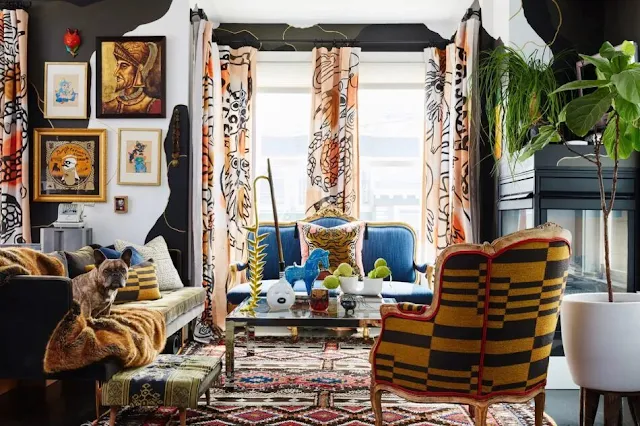The Art of Mixing Textures: How to Layer Fabrics and Finishes Like a Pro
Why Texture Matters in Interior Design
“Texture is the difference between a room that feels flat and a room that feels full of life,” says design expert Suzanne Tucker. A well-executed mix of materials—from soft textiles to rough woods—creates visual interest and makes a room feel layered and complete. In fact, studies show that layered textures can positively impact a room’s ambiance and even affect our perception of temperature, making a space feel cozier during colder months and more relaxed in warmer seasons.
Step 1: Start with a Base Layer
The first step to building a textured space is establishing a base layer, which often includes a room’s main fabric or finishes. This could be the color and texture of your walls or the upholstery on a large piece of furniture. Neutrals are an excellent starting point because they allow you to add multiple textures without overwhelming the space. Think of your base layer as the foundation for other textures.
For example, a cream-colored couch with a linen finish provides an ideal backdrop for adding richer textures through accent pieces like pillows and throws. It’s subtle yet substantial, setting the stage without drawing attention away from the following layers.
Step 2: Mix Soft and Hard Textures
Contrast is vital to successful texture layering. Combining soft and hard materials—such as velvet cushions on a leather sofa or a chunky knit blanket on a polished wood chair—can add depth and intrigue to any room. Each texture complements the other, creating a balanced aesthetic. Design professionals recommend balancing textures to avoid overpowering the room. For example, if you have a soft, fluffy rug, balance it with a sleek coffee table or metal accessories.
According to Spacejoy, textures work best in opposition; mixing something soft and warm, like a sheepskin rug, with excellent, metallic finishes creates a modern, sophisticated look without compromising coziness.
Step 3: Layering Fabrics for Comfort and Style
Textiles, from cotton and linen to velvet and wool, are an effortless way to add layers of texture. Start with a base fabric—such as linen or cotton—for large surfaces like curtains or sofas. Then, add layers with different weights and feels. Wool, for example, adds warmth, while silk or satin provides a touch of luxury. You might layer a velvet throw over a linen couch and finish with knit pillows for a relaxed yet refined aesthetic.
For an expert tip, remember proportions: use larger textures on big pieces and smaller textures as accents. This rule helps avoid clutter and keeps the room feeling cohesive.
Step 4: Use Patterns Sparingly
While layering textures, it’s easy to overdo patterns. Choose one or two key patterns to incorporate and let the textures talk. For instance, if you have a patterned rug, complement it with solid pillows and throws that vary in texture. Adding too many patterns can make the room feel chaotic; instead, allow a few patterns to act as focal points while balancing them with subtle, textured elements around the room.
Step 5: Add Natural Elements
Natural materials—like wood, stone, and leather—are excellent for texture layering. Each brings a unique element to a room, adding warmth, grounding, and an organic feel. A leather chair, a wooden coffee table, or a stone accent wall can add a sense of earthy sophistication. These materials enhance the design and provide tactile contrast when paired with soft fabrics or shiny finishes.
Step 6: The Finishing Touch with Metallic Accents
Metallic finishes offer an elegant, eye-catching contrast to polish off a textured space. Metals like brass, copper, or chrome contrast fabrics and natural materials, elevating the room’s design without overwhelming it. For example, a brass table lamp on a reclaimed wood side table or silver-framed mirrors against textured wallpaper add sparkle and sophistication to your room’s layered design.
Final Thoughts
Achieving a beautifully textured space takes practice and a bit of intuition. Start with a solid base, balance soft and hard materials, and don’t be afraid to mix textiles, patterns, and natural elements. Each layer should feel intentional, creating a space as comfortable as stylish.
A well-layered room doesn’t just look good—it feels complete, inviting, and timeless. So, embrace the art of texture, and let your creativity transform every room into a masterpiece.








Comments
Post a Comment